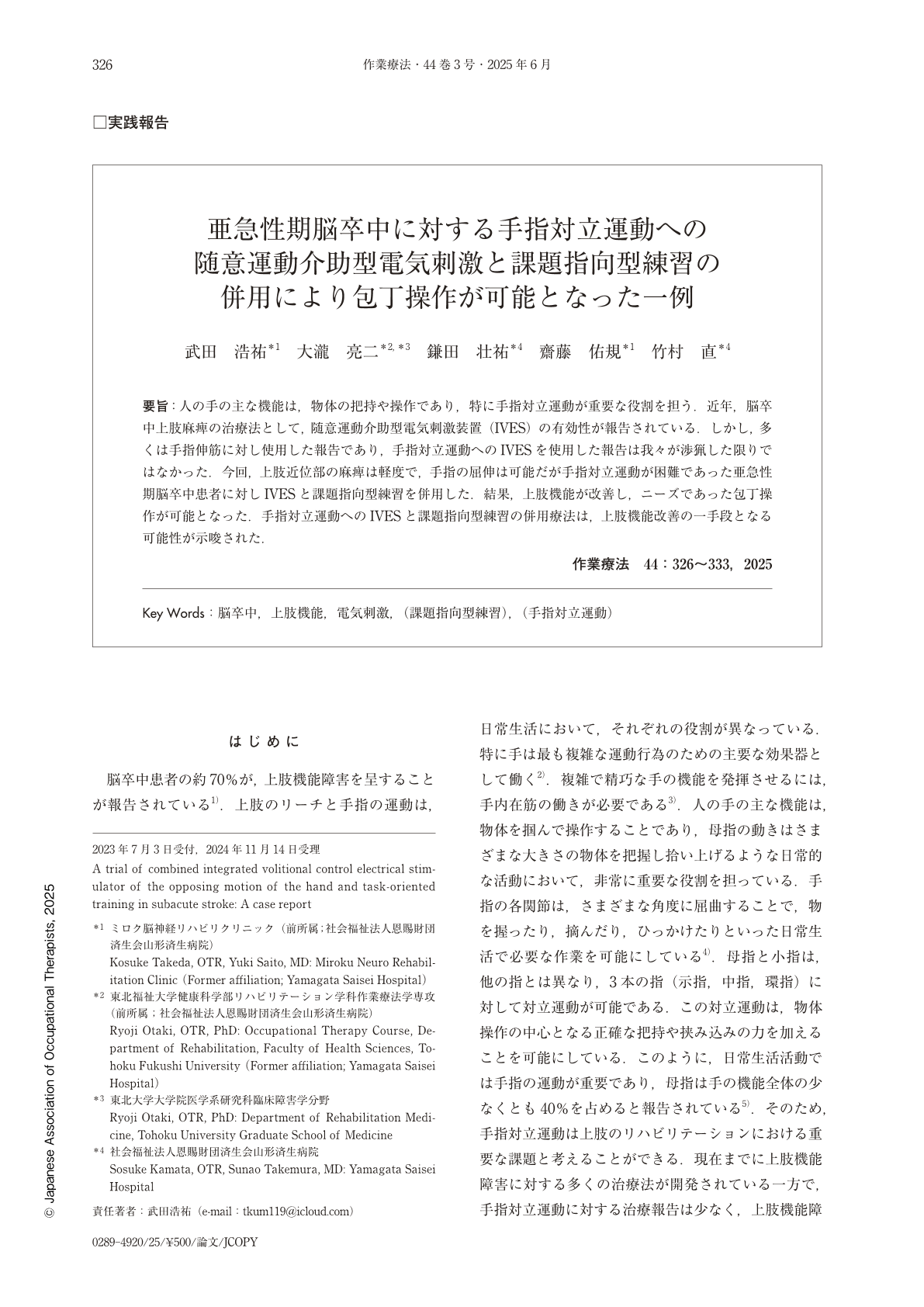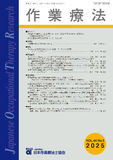Japanese
English
- 販売していません
- Abstract 文献概要
- 1ページ目 Look Inside
- 参考文献 Reference
要旨:人の手の主な機能は,物体の把持や操作であり,特に手指対立運動が重要な役割を担う.近年,脳卒中上肢麻痺の治療法として,随意運動介助型電気刺激装置(IVES)の有効性が報告されている.しかし,多くは手指伸筋に対し使用した報告であり,手指対立運動へのIVESを使用した報告は我々が渉猟した限りではなかった.今回,上肢近位部の麻痺は軽度で,手指の屈伸は可能だが手指対立運動が困難であった亜急性期脳卒中患者に対しIVESと課題指向型練習を併用した.結果,上肢機能が改善し,ニーズであった包丁操作が可能となった.手指対立運動へのIVESと課題指向型練習の併用療法は,上肢機能改善の一手段となる可能性が示唆された.
The main function of the human hand is to grasp and manipulate objects, with opposing movements of the fingers playing a particularly important role. In recent years, the effectiveness of integrated volitional control electrical stimulator(IVES) devices has been reported as a treatment method for stroke-induced upper limb paralysis. However, most of the reports used IVES on the extensor motion of the hand, with no reports using IVES on the opposing muscles of the hand. The present study combined IVES with task-oriented training for a subacute stroke patient with mild proximal upper limb paralysis who was able to flex and extend his fingers, but had difficulty with opposing hand movements. As a result, improvement in upper limb function was observed, and the patient was able to use a knife. The treatment method using IVES and task-oriented training for the opposing motion of the hand may be a means of improving upper limb function.

Copyright © 2025, Japanese Association of Occupational Therapists. All rights reserved.


